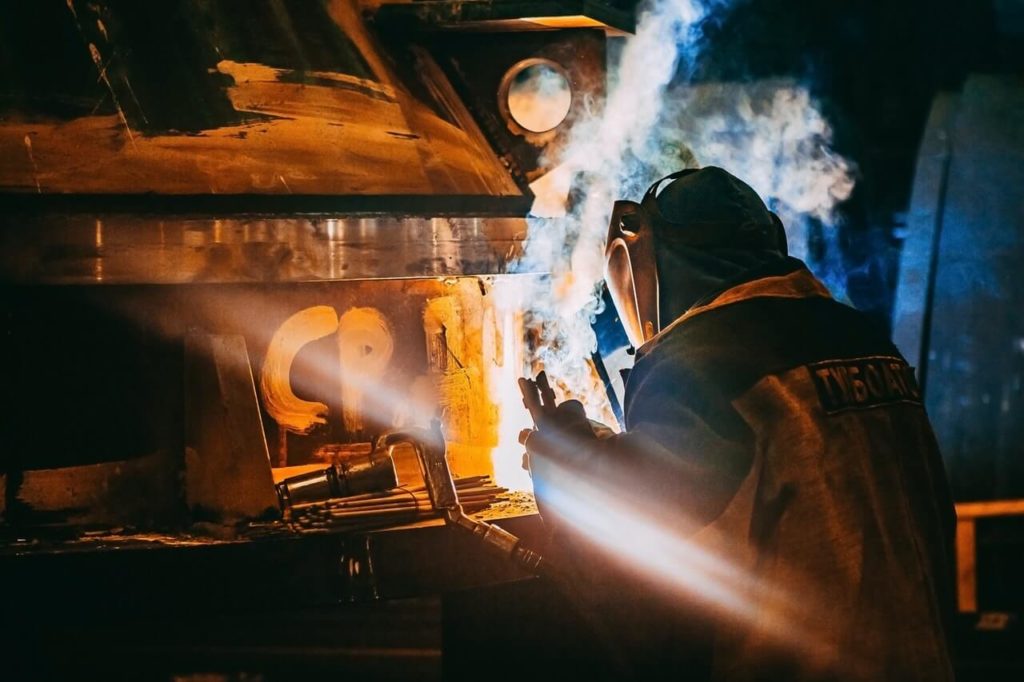Did you know that welding alone is the cause of almost 500,000 accidents and health risks in just a year? That’s just in America. When you consider the number of workers in the entire world, that statistic is just a ballpark of how many accidents actually happen around the globe.
We understand that welding and fusing materials into one are an important part of your business, but accidents such as electrocution, severe burns, injuries to the eye, and even respiratory diseases caused by the inhalation of fumes are just some of the things that are tied alongside this activity.
Of course, a huge percentage of these accidents can be prevented by wearing the proper gear. That is why we’ve prepared this short article for you to understand one of the most common and most important welding gears, the helmet.
What Is a Helmet?
A person’s ability to command and send signals to every part of the body comes from the brain, and that is why protecting it even from the smallest damage is necessary. To be able to do this, they need a helmet.
A helmet is a protective gear worn as a shield to cover the top of the head or the entire skull. This will keep dangerous elements from reaching fragile parts of the head to reduce or completely extinguish the risks of suffering from injuries. If one of your workers does suffer a work accident involving helmets, contacting a brain injury lawyer is an important part of reconciling with the injured employee.
Recreational activities such as biking, rock climbing, or a wide variety of sports need helmets. However, work activities that are prone to danger, such as construction and mining, also require helmets—really hard helmets.
Why Do Your Workers Need a Helmet Specific for Welding?

With that in mind, you can’t just let your workers use any kind of helmet for welding because, more often than not, it can’t provide the protection that they need for the activity. For beginners and experts alike, using a helmet specifically for welding is necessary for these particular reasons.
Some helmets, like bicycle helmets, are there to shield the top of the head. This means that helmets like these can’t protect the eyes, which is very important in welding. Although there are helmets that can cover the entire face, like full-faced helmets used in motocross racing, the goggles or eye-shield it comes with is only ideal for these sports. Since welding involves sudden sparks of bright lights, the shade of these helmets is not enough to minimize brightness.
Apart from that, most of these full-face helmets and goggles are made of plastic. This can be troublesome for welding because when exposed to extreme heat, it can easily melt this plastic right on a person’s face. That being said, the helmet they should use for welding must be made specifically for welding since its features can withstand the hazards brought about by this activity.
How Does a Welding Helmet Work?
There are different kinds of welding helmets, and how they specifically work differs from one another. However, the fundamentals of its functionality stay true for almost all kinds of welding helmets.
To put it simply, since welding involves working in extremely bright conditions, welding helmets provide a shade for the eyes to minimize brightness. When welding, the contact of two metals being fused releases both ultraviolet and infrared rays. These rays are what cause inflammations on the cornea, also known as arc eye, as well as retina burns. These conditions are not just painful but may cause blindness as well. The hard truth is that some of these conditions may last for a few days or weeks, while some severe cases can be permanent and last an entire lifetime.
When workers use a welding helmet, the ultraviolet and infrared rays that their eyes are supposed to receive are minimized or completely blocked by the helmet’s shade. Aside from that, since a welding helmet covers the eyes and the entire face, it can also prevent the rays, heat, and sparks from reaching exposed skin on the face, which usually cause conditions relative to sunburns.
There will always be certain risks involved in doing activities of this kind. It is not a secret that it’s very dangerous to work around electricity, metals, and heat. Not to mention combining them all in one single recipe. On the other hand, it’s also true that there’s something you can do about it.
Although it’s difficult to completely remove the dangers involved, doing the proper precautionary measures will ensure that your workers are safe while working. One of the most important preventive measures is your workers should wear the proper gear, and the gear they need most is the one that protects their brains.
